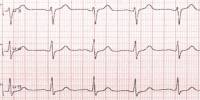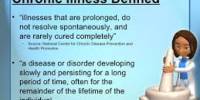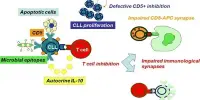A mechanism has been discovered that explains how physical activity during pregnancy promotes offspring’s metabolic health. The answer, according to experts, is a protein called SOD3, vitamin D, and appropriate activity, with the results potentially providing the first steps toward constructing logical diet and exercise programs to utilize throughout pregnancy, especially when moms are overweight or obese.
The study, headed by academics from Harvard Medical School’s Joslin Diabetes Center and colleagues from Japan, the United States, Canada, and Denmark, was published online by Cell Metabolism.
“We’ve known for a while that risks for obesity and type 2 diabetes can originate in the critical prenatal developmental period,” said senior author Laurie Goodyear. “In particular, there is real concern that the increasing levels of obesity seen in women of reproductive age will transmit disease risk to subsequent generations. It’s important to understand that if this is not alleviated, rates of diabetes and obesity will only continue to grow in the coming years.”
Increased maternal body weight and bad diets have previously been associated to lower metabolic outcomes in offspring, frequently many years later. According to the study’s authors, understanding the processes by which maternal exercise might reverse these impacts could lead to interventions that prevent disorders from being passed down through generations.
“The findings offer an explanation as to why physical exercise during pregnancy may have metabolic benefits for offspring as they get older,” said Goodyear. “We show how physical exercise during pregnancy, in combination with adequate vitamin D levels, enhances levels of a placenta-derived protein called SOD3 (superoxide dismutase 3), and that via a number of intermediate steps, this improves glucose tolerance in offspring.”
The findings came from a series of studies using pregnant mice in which groups were exposed to voluntary wheel running (i.e., exercise) vs sedentary groups. The authors thoroughly evaluated the effects of exercise on factors such as DNA methylation, cell signaling, and gene expression, especially in connection to glucose metabolism, using a variety of methodologies.
In summary, scientists discovered that SOD3 is a placenta-derived protein that stimulates an unique signaling pathway in offspring’s livers that controls DNA demethylation, which improves a variety of aspects of glucose management.
Our data hints that exercise in combination with optimal vitamin D levels might be particularly beneficial during the 2nd trimester of pregnancy. Although we can’t be definitive about this with the current findings, we now plan to look in detail at how diet and exercise type and timing might be optimized with maternal serum SOD3 measurements to obtain maximum benefits for offspring.
Joji Kusuyama
They also emphasize the importance of vitamin D as a modulator of SOD3 expression, with their findings indicating that sufficient vitamin D levels in the maternal diet were required to alter placental SOD3 levels and, as a result, any benefits in metabolic health in offspring.
They point out that high dietary levels of the vitamin in the absence of exercise, as well as the reverse scenario, did not result in increases in SOD3, which they believe is important if SOD3 is targeted clinically.
Although the majority of the research was done on mice, the scientists also looked at SOD3 levels in pregnant women and discovered that those who exercised more had higher serum and placental SOD3 levels, which were highest during the second trimester of pregnancy.
“In terms of clinical application, it looks like the most efficient way to raise levels of the SOD3 protein is still likely to be via physical exercise,” said lead author Joji Kusuyama. He added that there may also be clinical interest in using maternal serum levels of SOD3 as a biomarker to assess the benefits of exercise during pregnancy.
“Our data hints that exercise in combination with optimal vitamin D levels might be particularly beneficial during the 2nd trimester of pregnancy,” said Kusuyama. “Although we can’t be definitive about this with the current findings, we now plan to look in detail at how diet and exercise type and timing might be optimized with maternal serum SOD3 measurements to obtain maximum benefits for offspring.”
The study has some limitations, according to the authors, including generalizability to all races and ethnicities and the fact that key components of the signaling system still need to be investigated further. Nonetheless, they believe these findings add to our understanding of the significance of exercise throughout pregnancy and the anticipated dynamic metabolic benefits for kids.
“This report focuses on SOD3 and the metabolic benefits for offspring of maternal exercise, but there may be wider benefits of this protein on other body organs. For example, we are currently investigating the effects of maternal exercise and SOD3 on brain function in the offspring,” said Goodyear.
“We are also doing more in-depth investigation of maternal exercise effects on placenta because we found there are a plethora of changes in this tissue, and these placental adaptations may also have life-long effects in offspring. It’s early days but understanding how exercise and fitness before and during pregnancy work may be the key to better health for subsequent generations.”
















